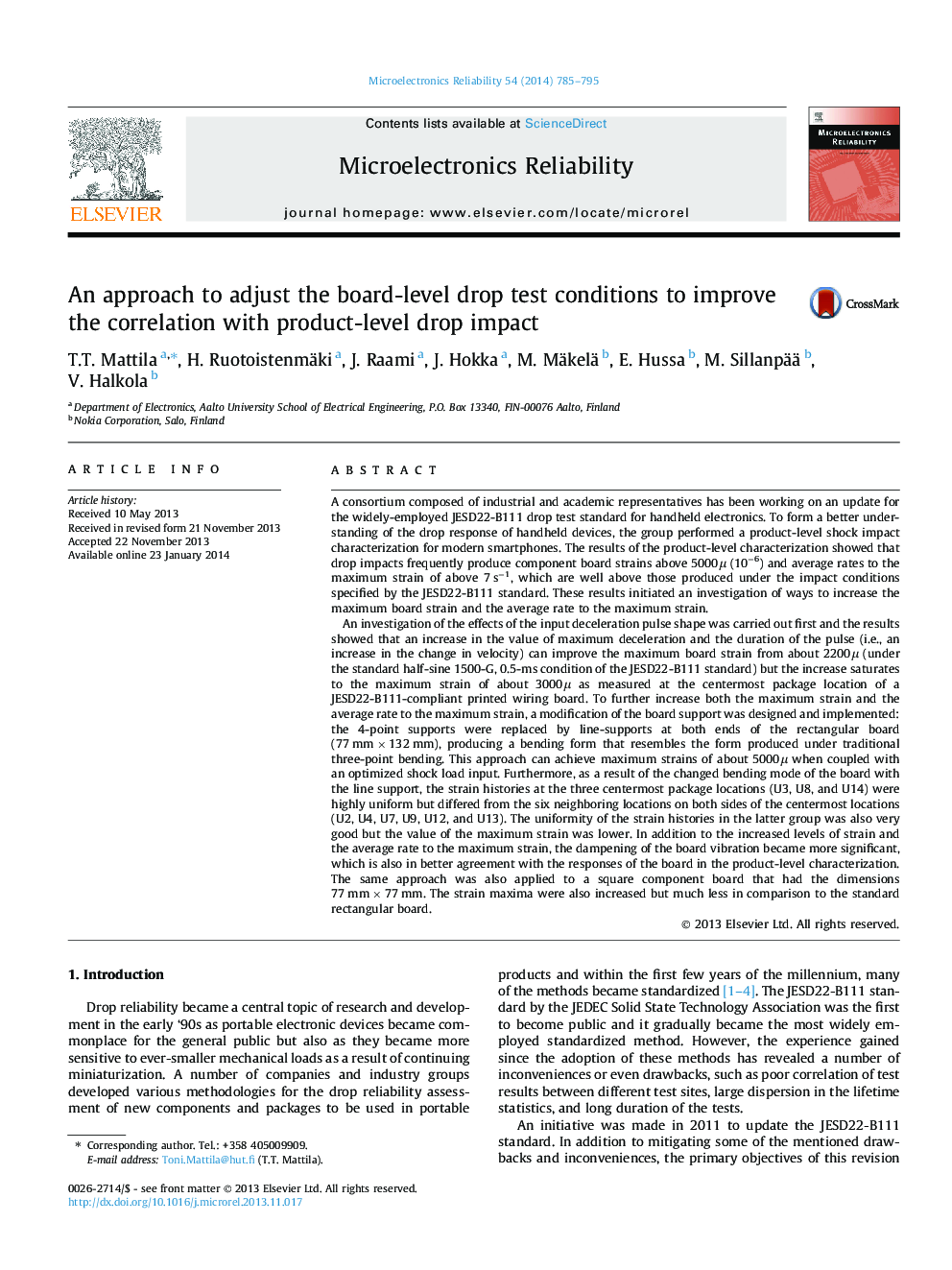| کد مقاله | کد نشریه | سال انتشار | مقاله انگلیسی | نسخه تمام متن |
|---|---|---|---|---|
| 549006 | 872317 | 2014 | 11 صفحه PDF | دانلود رایگان |
• Under 4-point support the increase in the max. board strain saturated to about 3000μ.
• The 4-point supports were replaced by line supports to further increase the board strain.
• Max. strains of about 5000μ was achieved under the line support conditions.
• The strain histories also became much more uniform.
• The line supports were implemented also to a square component board.
A consortium composed of industrial and academic representatives has been working on an update for the widely-employed JESD22-B111 drop test standard for handheld electronics. To form a better understanding of the drop response of handheld devices, the group performed a product-level shock impact characterization for modern smartphones. The results of the product-level characterization showed that drop impacts frequently produce component board strains above 5000μ (10−6) and average rates to the maximum strain of above 7 s−1, which are well above those produced under the impact conditions specified by the JESD22-B111 standard. These results initiated an investigation of ways to increase the maximum board strain and the average rate to the maximum strain.An investigation of the effects of the input deceleration pulse shape was carried out first and the results showed that an increase in the value of maximum deceleration and the duration of the pulse (i.e., an increase in the change in velocity) can improve the maximum board strain from about 2200μ (under the standard half-sine 1500-G, 0.5-ms condition of the JESD22-B111 standard) but the increase saturates to the maximum strain of about 3000μ as measured at the centermost package location of a JESD22-B111-compliant printed wiring board. To further increase both the maximum strain and the average rate to the maximum strain, a modification of the board support was designed and implemented: the 4-point supports were replaced by line-supports at both ends of the rectangular board (77 mm × 132 mm), producing a bending form that resembles the form produced under traditional three-point bending. This approach can achieve maximum strains of about 5000μ when coupled with an optimized shock load input. Furthermore, as a result of the changed bending mode of the board with the line support, the strain histories at the three centermost package locations (U3, U8, and U14) were highly uniform but differed from the six neighboring locations on both sides of the centermost locations (U2, U4, U7, U9, U12, and U13). The uniformity of the strain histories in the latter group was also very good but the value of the maximum strain was lower. In addition to the increased levels of strain and the average rate to the maximum strain, the dampening of the board vibration became more significant, which is also in better agreement with the responses of the board in the product-level characterization. The same approach was also applied to a square component board that had the dimensions 77 mm × 77 mm. The strain maxima were also increased but much less in comparison to the standard rectangular board.
Journal: Microelectronics Reliability - Volume 54, Issue 4, April 2014, Pages 785–795
